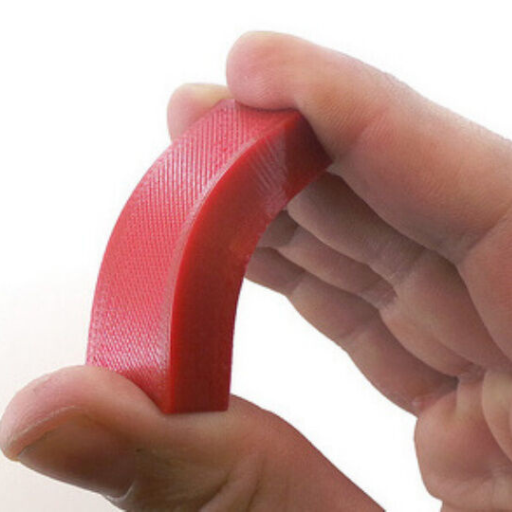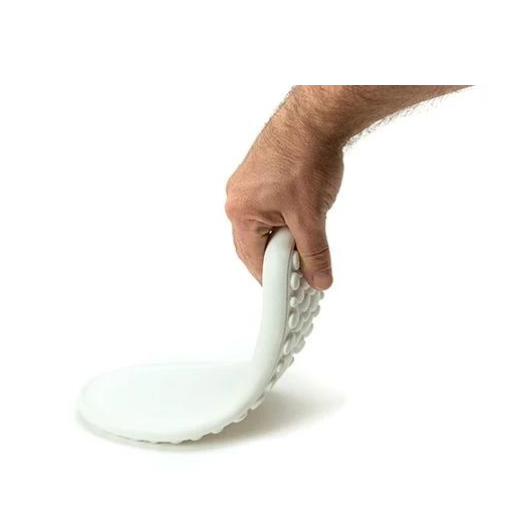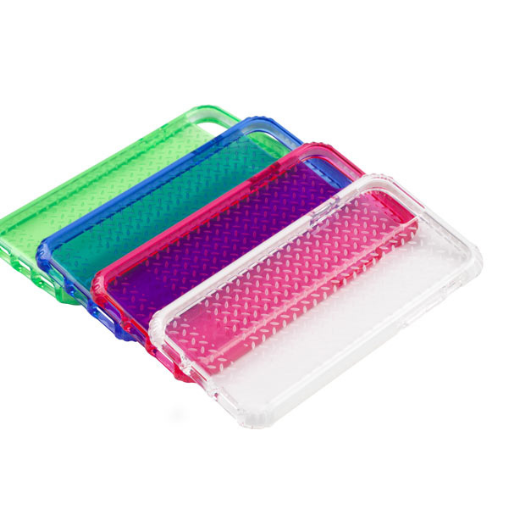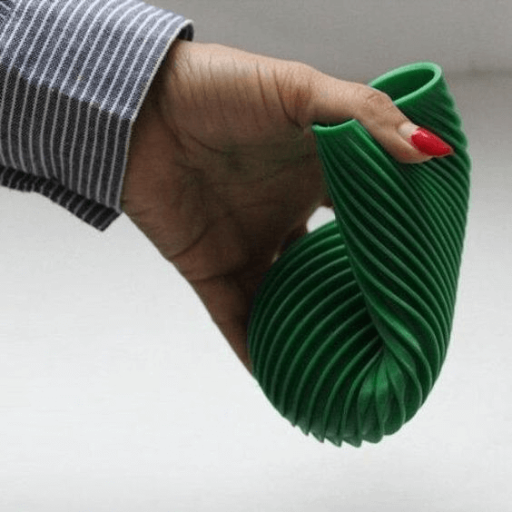Thermoplastic Polyurethane (TPU) is a versatile polymer that has gained significant traction in various industries due to its exceptional properties and wide range of applications. This blog aims to provide an in-depth understanding of TPU, exploring its characteristics, benefits, and the reasons behind its growing popularity. We’ll delve into the unique qualities that set TPU apart from other materials, such as its flexibility, durability, and resistance to abrasion and chemicals. Additionally, we will discuss the diverse applications of TPU, from consumer goods and medical devices to automotive parts and sporting equipment. By the end of this article, you will have a comprehensive grasp of why TPU is considered the ultimate thermoplastic flexible material and how it can be leveraged for innovative solutions in numerous fields.
What is TPU Material?
Understanding Thermoplastic Polyurethane
Thermoplastic Polyurethane (TPU) is a type of thermoplastic elastomer which combines the key characteristics of plastic and rubber. It results from reacting diisocyanates with one or more polyols types and a chain extender. High elastic, transparent and resistant to oil, grease and abrasion are some of the properties known about TPUs.
Key Properties of TPU:
- Flexibility: This has good flexibility as it can be stretched considerably without any permanent distortion, making it ideal for applications that require a high degree of elasticity and flexibility.
- Durability: The durability of TPU is well-known; it stands up well to wear and tear even under harsh environmental conditions.
- Chemical Resistance: It resists a wide range of chemicals like oils, solvents, greases etc., which makes it suitable for industrial applications.
- Temperature Performance: Over the –40°C to 80°C (-40°F to 176°F) temperature range, TPU hardly loses any properties.
- Hardness Variability: During production process, hardness levels are adjustable in TPUs ranging from very soft (Shore A 60) through to very hard (Shore D 85).
Technical Parameters of TPU:
- Density: 1.10 – 1.25 g/cm³
- Tensile Strength: 30 – 60 MPa
- Elongation at Break: 300% – 700%
- Abrasion Resistance: <40 mm³ (ISO4649 method)
- Hardness (Shore A): 60 -90
- Melting Point:175 °C –220 °C(347°F-428°F)
These technical parameters indicate how versatile & adaptable TPUs are in different applications. A perfect balance between rigidity & elasticity is provided by an exclusive combination of these properties allowing its use in various industries as well as among consumers’ goods.
TPU vs. Other Thermoplastic Elastomers
However, there are several major distinctions between TPU and other thermoplastic elastomers (TPEs) such as SBCs (styrene block copolymers), TPVs (thermoplastic vulcanizates) and COPEs (copolyester elastomers).
- Flexibility and Elasticity: TPU is exceptional for its impressive flexibility and the ability to regain its original shape after stretching. Although flexible as well, TPVs often offer better elasticity because of their rubbery nature though they don’t possess stress recovery abilities like TPU.
- Durability and Toughness: TPU is renowned for its excellent durability and resistance to wear thus it is ideal where long life materials are required. On the other hand, COPEs may not be any tougher than TPVs though both have high durability rates especially under abrasive circumstances.
- Chemical Resistance: In contrast to SBCs or TPVs that may degrade when exposed to harsh chemicals, TPU has a much higher resistance toward oils, solvents and greases. Conversely, even though COPEs offer good chemical resistance, in extreme environments their performance could be inferior to that of TPU.
- Temperature Performance: Within a range from –40°C up to 80°C (-40°F-176°F), the performance of TPU can be considered as being very good. This material also withstands low temperatures well; however some TPVs perform better at higher temperatures while SBC’s limits are usually narrower than those of TPU.
- Hardness Variability: Within this scope, hardness levels can vary significantly ranging from very soft to very hard ranging from Shore A 60 to Shore D 85 in case of TPU. This range of adjustability exceeds typically found in SBCs & COPEs but still falls short on extreme hardnesses reachable by TPV recycling grades.
In summary, these qualities of TPU – superior flexibility, excellent durability, outstanding chemical resistance and wide temperature performance range – make it more versatile than other TPE’s. However each has its own strength and may be preferred depending on the use required.
Characteristics and Properties of TPU
Mechanical Properties:
- Tensile Strength: TPU has a high tensile strength, usually ranging from 25 to 50 MPa giving it excellent performance in tough applications.
- Elongation at Break: TPU has the ability to stretch considerably before breaking with most values lying between 300% and 600% which is superior to others in terms of flexibility.
- Tear Resistance: TPU exhibits exceptional tear resistance usually about 80-200 kN/m that make it suitable for use in items requiring durability.
Hardness:
- Shore Hardness: TPU’s hardness varies from Shore A 60 to Shore D 85 hence offering wide range of hardness levels necessary for diverse applications.
Thermal Properties:
- Operating Temperature Range: It can be used over a wide temperature range of -40°C to 80°C (-40°F to176°F) without losing its properties even under extreme conditions.
- Glass Transition Temperature (Tg): Most TPUs have a Tg around -50°C to -20°C, which makes them flexible even at very low temperatures.
Chemical Resistance:
- Resistance to Oils and Greases: Compared with other thermoplastics, this material offers the best resistance against oils and greases ensuring longer life time in chemically aggressive environments.
- Compatibility: It resists a broad array of chemicals common in industrial processes better than SBCs or TPVs do.
Abrasion Resistance:
- Abrasion Index: It is an elastomer having an outstanding abrasion resistance measured by an abrasion index value about 20-30 mm³/1000 cycles indicating that it is lower than other elastomers including those described earlier on.
Environmental Properties:
- UV Resistance: Generally TPU products have good UV-resistance properties but specific grades may be further optimized for extended exposure under sunlight.
- Biodegradability: Some grades of TPU can be biodegradable hence environmentally friendly in some applications.
In summary, TPU is such a highly versatile material with combined mechanical strength, hardness variability, excellent thermal stability and outstanding chemical resistance. These characteristics are supported by relevant technical parameters that justify its selection over other thermoplastic elastomers.
How is TPU Processed?
Techniques for Injection Molding of TPU
Injection molding of TPU requires various processes to be followed in order to achieve the maximum use of its properties. Below is a summary from the best resources:
Material Preparation:
- Drying: Before molding, it is essential to dry TPU granules thoroughly to avoid hydrolysis and ensure quality. The drying time usually ranges between 2-4 hours with temperatures varying between 80°C and 110°C depending on the grade of TPU.
Molding Machine Settings:
- Temperature Control: Carefully setting barrel temperatures from approximately 190℃ to 220℃ and maintaining mold temperature from around 30℃ to60℃ ensures good part quality.
- Injection Pressure: Right injection pressure is important in ensuring that the mold fills completely with TPU. It typically varies from 60 MPa to150 MPa.
Cycle Time:
- Cycle Optimization: Productivity and quality depend much on cycle times. In most cases, it can be within a range of 30 seconds to one minute but this will greatly vary depending on complexity and size of the part.
Cooling and Demolding:
- Controlled Cooling : Uniform cooling prevents warping as well as internal stresses. Dimensional stability is preservedwhen demolding which allows the parts made from TPU cool gradually inside their molds.
These are some factors that make successful injection molding of TPUs possible hence leading into production of consistent high-quality products suitable for many applications. This process must finely be tuned based on specific requirements of end product with respect to the particular grade of TPU.
TPU Filament Extrusion Methods for 3D Printing
To extrude TPU filament for three-dimensional (3D) printing, precise control over several parameters having a significant impact on end results is required. Here’s a short guide based on top resources:
Material Preparation:
- Drying: For instance, dried up granules should have less moisture content. The recommended drying temperature is approximately 60℃-80℃ within 3-4 hours.
Extruder Settings:
- Temperature Control : Preferred extruder temperatures for TPU filament production generally range from 190°C to 230°C. Filament diameter uniformity is achieved through consistent temperatures throughout the extruder zones.
- Screw Speed: The screw speed should be adjusted to balance between throughput and the proper mixing of the TPU material, usually kept between 30 to 80 RPM depending on the extruder.
Cooling and Spooling:
- Cooling Process: After extrusion, gradual cooling of the filament can be done using water baths so that its dimensions remain intact without inducing internal stresses.
- Spooling: Consistency in spooling will avoid filament tangles as well as maintain quality. Using a tension-controlled spooler improves even winding of the filament making process easier.
By adhering to several factors such as thorough drying, precise temperature control, proper screw speed and controlled cooling, good quality TPU filaments suitable for 3D printing are successfully extruded.
Compression and Polyaddition Reactions in TPU Processing
Compression and polyaddition reactions are two main processes in manufacturing and processing thermoplastic polyurethane (TPU). Compression molding involves shaping the TPU material under heat and pressure which may affect its final properties like stiffness or elasticity. Consistent pressure and temperature during compression process are needed for high-quality uniformly shaped products made from TPU.
However, the essential chemical procedures that take place during synthesis of TPU are polyaddition reactions. These bring about long polymer chains through the reaction between diisocyanates and polyols thus giving TPU its special attributes like flexibility, toughness and resistance to fatigue. For TPU to have certain properties in its end material, it is very important that some reaction parameters be regulated such as temperature, reactant ratios and catalysts.
High performance products of TPU can only be manufactured if effective compression molding techniques and precise control of polyaddition reactions are used.
What are the Applications of TPU?
TPU in the Automotive Industry
Thermoplastic polyurethane (TPU) is widely used in the automotive industry due to its outstanding versatility and performance features. TPU is commonly employed to make many parts of a car including inner trims, outer components as well as seals owing to its higher resistance against abrasion, impact, and weather conditions as compared to other materials. It remains flexible at low temperatures while retaining stability under high temperature environments like cable jackets and protective films. Furthermore, TPU offers easy manufacturing and coloring options that make it popular for designing beautiful but strong components. Therefore, it may be inferred that when using TPU in the automobile sector, not only are both quality assurance and long-lasting products ensured but also safety and comfort of cars are enhanced.
Usage of TPU in Footwear Manufacturing
Footwear making has been revolutionized by thermoplastic polyurethane (TPU) because of its special features that satisfy different requirements for shoes. For instance, TPU significantly contributes to the making of shoe soles that have great durability as well as flexibility besides being resistant to abrasion. Additionally, it provides a good balance between cushioning and support which are vital for comfort and healthy feet. Also, ability to mold TPU easily makes it popular for both functional and fashionable types of footwear characterized by intricate designs or patterns on them. Suppliers can count on this substance’s resistance towards harsh climatic conditions varying from cold weather up to extreme heat while still maintaining their dependability over time thus customers benefit from its longevity too. In addition, the recyclability feature adds into how sustainable footwear production practices can be embraced globally.
TPU for Durable and Flexible Consumer Products
The durability and flexibility of thermoplastic polyurethane (TPU) make it an important material in consumer products industry.Numerous everyday items such as phone cases wearables or sporting goods are made from this versatile substance.TPU has superior resistance to impact, abrasion, and environmental effects including UV light, free radicals and chemicals.Its flexibility also allows the repeated bending and stretching of products without any loss in performance making it suitable for flexible electronics or protective gears. Furthermore, it is easy to form TPU into different shapes and colors thereby producing visually appealing consumer goods that have utility as well. In this regard, the combination of functionality and aesthetics underpinned by environmental benefits for instance recyclability signifies the central place of TPU within modern high-performance consumer goods.
How Does TPU Performance Compare to Rubber and Other Plastics?
TPU vs. Traditional Rubber: The Characteristics and Uses
When comparing TPU to traditional rubber, several key properties and uses distinguish these materials:
- Durability: Durability is an important property that distinguishes TPU from traditional rubber. It is observed that TPU has better tearing and abrasion resistance than traditional rubber hence it tends to be more durable in harsh environments. Abrasion resistance of TPU ranges between 20mg and 30mg (DIN ISO 4649) whereas traditional rubbers commonly exhibit higher levels of abrasion.
- Flexibility: While both TPU and natural rubber show good flexibility, the former maintains its flexibility across a wider range of temperatures (-40°C to 80°C). Traditional rubbers including natural rubber become brittle at lower temperature points.
- Chemical Resistance: Unlike traditional rubbers, which are easily decomposed by oils, greases, some chemicals etc., TPU remains unaffected by those chemicals for a long time. This means that it can be exposed to many solvents and oils without disintegrating making it suitable for use in highly chemically aggressive environments.
- Elasticity: Rubber boasts of being elastic; that property where it can return into its original shape when deformed. Nonetheless, TPU displays superior tensile strength values typically within the range of 30-60MPa compared with conventional rubbers which fall between10-20 MPa.
- Environmental Impact: In many consumer and industrial applications, TPU is therefore preferred as being environmentally friendlier than most other common polymers because they have the advantage of recyclability unlike traditional rubbers.
- Processing and Manufacture: A complex geometries such as injection molding, extrusion or blow molding allows processing easily with material like thermoplastic polyurethane (TPU) compared to other types such as vulcanization normally associated with conventional elastomers manufacturing processes.
These technical parameters illustrate that while both TPU and traditional rubber have their respective advantages, TPU’s enhanced durability, flexibility across diverse temperatures, chemical resistance and recyclability often make it the preferred material in modern applications.
Comparing TPU to PVC and TPE
Thermoplastic Polyurethane (TPU), Polyvinyl Chloride (PVC) and Thermoplastic Elastomer (TPE) are all versatile materials that find a wide range of applications but also have different properties which make them suitable for different uses.
Durability and Flexibility:
- TPU: This material is known for its good abrasion resistance, elasticity, and flexibility at both high and low temperatures, thus frequently used as very tough but elastic in things like shoes, car parts or sport items.
- PVC: As far as this material is concerned its durability is good with respect to environmental degradation. However, it lacks elasticity than TPU and TPE hence it’s mostly employed in construction materials, pipes, medical devices etc.
- TPE: It has similar flexible qualities as those seen in TPU yet has lower durability and tensile strength. For softer applications such as grips and seals, we use thermoplastic elastomers more often referred to as TPE.
Chemical Resistance:
- TPU: Compared to PVC and TPE it shows the most effective chemical resistance making it useful under exposure to oils, greases or certain solvents.
- PVC: Its chemical resistance is good although there can be degradation by some solvents at high temperature.
- TPE: Provides moderate resistance to chemicals but generally less than that of TPU hence suitable for general cases where high chemical resistance not always demanded.
Environmental Impact:
- TPU: This can be recycled or reprocessed hence making it a sustainable material.
- PVC: Its recycling is complicated by the fact that harmful chemicals are emitted during processing.
- TPE: Generally recyclable depending on the specific type of the given tpe being considered easy or difficult to recycle.
Processing and Manufacture:
- TPU: Injection molding extrusion blow molding among others allows manufacturing versatility thereby allowing manufacture of complex shapes with this thermoplastic.
- PVC: To become flexible and soft PVC often requires the addition of plasticizers and it can be processed through extrusion or injection molding.
- TPE: Similar to TPU, TPE can be easily processed using similar methods although they may not achieve the same level of detail in complex shapes.
To sum up, while TPU generally provides better benefits in terms of long-life, flexibility as well as resistance to chemicals, there also are advantages associated with PVC and TPE depending on specific requirements for such applications. These variables would help users choose the best material for their application needs.
The Wide Range of TPU Applications in Various Industries
TPU (Thermoplastic Polyurethane) is a very versatile material that has many uses across industries due to its unique properties that it possesses.
- Footwear: Sports footwear is one of the main application areas for TPU. It is used for shoe soles and other components requiring high durability because of its abrasion resistance, flexibility and cushioning features.
- Automotive: In automotive sector, interior and exterior parts are made from this material. Due to its ability to withstand environmental damage and wear and tear like dash-board components, gaskets, protective coatings etc. this makes it ideal for these purposes.
- Medical: Biocompatibility and flexibility are two important characteristics of TPU which are necessary in medicine manufacturing. It is a common raw materials used in making different medical products including catheters, surgical drapes as well as mobility aids where both strength and patient safety should be considered highly important factors when choosing materials.
- Electronics: Electronics industry values greatly the strength as well as the fact that TPU has bending quality combined with stiffness. Protection case for smartphones is made from such thermoplastic; additionally cable jacket for cables especially those used in electronics fall in this category too.,
- Textile and Fashion: Also, TPU is becoming popular in the textile industry used when creating waterproof and breathable clothing materials as well as adhesives. This makes it great for high-performance outerwear like sportswear since apart from its ability to bond with other materials without affecting its flexibility.
In summary, TPU’s exceptional blend of chemical resistance, mechanical features, and processing flexibility is what makes it suitable for many sectors hence making it an ideal material for many different uses.
Is TPU Suitable for 3D Printing?
Advantages of TPU Filament in 3D Printers
When looking into TPU filament for 3D printing, there are a number of reasons why it makes a great option for different applications. First and foremost, its flexibility and stretchiness that make parts such as gaskets, insoles and phone cases highly resilient and flexible. Also, the strong layer bonding found with TPU reduces the chances of warping and thus making the printed objects durable and long lasting. Further its resistance to oil, chemicals or abrasion make it possible to produce working parts used under harsh conditions. In summary; this versatile material can be used by enthusiasts in 3D printing to create robust flexible high-performance prints.
How to Use TPU Material for 3D Printing
Printing with TPU materials is both exciting and challenging. Based on my experience and my research from top websites, here are the main steps you should follow to succeed with this process. The first thing you need is a direct drive extruder since Bowden setups can be problematic due to the flexibility of TPU filaments. Second is adjusting print speed down to around 20-30 mm/s so as to prevent filament binding or jamming. Moreover, a print temperature between 220°C and 250°C should be maintained while using heated bed set at about 60°C for enhancing adhesion as well as preventing warping too much during printing. Lastly, do not forget enabling retraction settings sparingly in order to decrease stringing considerably. Such changes make 3D printing with functional materials like TPU easier than ever before!
Reference sources
- 3D Insider – TPU Filament: A Comprehensive Guide
- Source: 3D Insider – TPU Filament
- Summary: This article from 3D Insider provides an in-depth overview of TPU (Thermoplastic Polyurethane) filament, detailing its properties, applications, and advantages. It explains how TPU offers flexibility, durability, and chemical resistance, making it ideal for various industrial and consumer applications. The guide is particularly useful for 3D printing enthusiasts looking to understand the benefits and challenges of using TPU.
- ScienceDirect – Thermoplastic Polyurethane Elastomers (TPU)
- Source: ScienceDirect – Thermoplastic Polyurethane Elastomers
- Summary: ScienceDirect offers a scholarly article that explores the chemical structure, mechanical properties, and applications of thermoplastic polyurethane elastomers. This academic journal article provides a thorough scientific analysis of TPU, including its synthesis, thermal properties, and performance characteristics. It is a credible source for researchers and professionals seeking detailed and technical information about TPU materials.
- Covestro – TPU Material Solutions
- Source: Covestro – TPU Material
- Summary: Covestro, a leading manufacturer of high-performance polymers, provides a comprehensive overview of their TPU material solutions. The article highlights the versatility of TPU in various industries, including healthcare, automotive, and electronics. It discusses the unique properties of TPU, such as flexibility, abrasion resistance, and biocompatibility, making it a valuable resource for industry professionals looking to explore the practical applications and benefits of TPU materials.
Frequently Asked Questions (FAQs)
Q: What is TPU material?
A: TPU stands for Thermoplastic Polyurethane, a special material that has combined the characteristics of rubber and plastic. While holding to its material properties, this thermoplastic can be melted and reshaped several times which enabled it to be termed as one.
Q: What are the main components used to make TPU?
A: The main polymerization technique utilized in the synthesis of TPU is polyaddition reaction between diisocyanates and one or more diols. This process involves reacting a diisocyanate with flexible diols thus forming hard and soft segments in the polymer structure.
Q: What are the advantages of using TPU material?
A: TPU possesses such diverse features as high flexibility, durability, abrasion resistance as well as resistance to chemicals and oils. These properties have led to its usability across various applications.
Q: What types of TPU materials are available?
A: Different kinds of TPU materials exist including polyester-based, polyether-based, and aliphatic TPUs. Every type has definite characteristics that make them applicable for particular uses.
Q: How is TPU used in 3D printing?
A: When it comes to making flexible parts from 3D printing technology, among other things; people like using this kind of filament. The smooth rubber-like components produced by FDM (Fused Deposition Modeling) or SLS (Selective Laser Sintering) can use different types of 3D printing technologies.
Q: What are some common applications of TPU material?
A: Castor wheels, power tools, inflatable products, molded parts for automotive interiors etc., all these products are made from TPU because it’s a flexible plastic capable of being bent over a wide range.”













